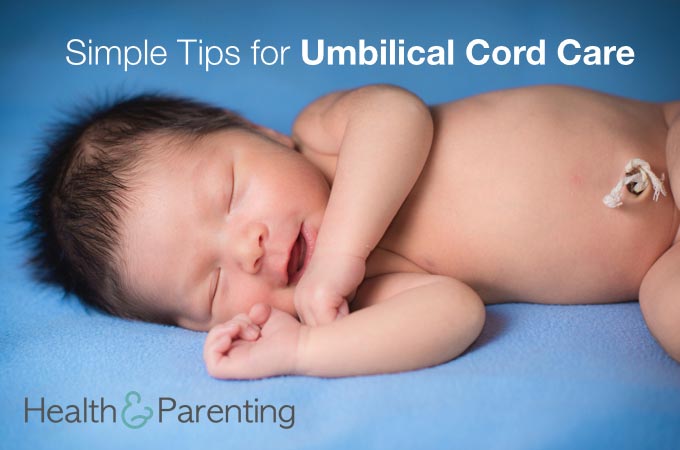It supplied oxygen, nutrients and was the lifeline between you and your baby throughout your pregnancy. But once your little bundle makes her debut, she no longer needs the umbilical cord. After you deliver, the cord is clamped and snipped close to your baby’s body. What’s left is a small umbilical cord stump, which is connected to your baby’s navel.
Keeping the Cord Clean
This strange little stump attached to your baby may look a little intimidating, but umbilical cord care is actually quite simple. First, don’t be freaked out if the stump changes colors. While it typically starts out a blueish white, as it dries, it often changes colors and becomes black. In most cases, the stump shrinks, dries out and eventually falls off around two to three weeks after birth.
In the meantime, you just need to keep the area clean and dry and allow nature to take its course. For example, it’s best to stick to sponge baths instead of tub baths until the cord stump drops off. A sponge bath helps the cord stay dry, which may accelerate how fast it falls off.
In most cases, there is no special cleaning required. Doctors used to recommend cleaning the area with alcohol after diaper changes. But the American Academy of Pediatrics changed that recommendation since research indicates the cord falls off and heals faster if left alone.
If the area around the stump becomes dirty due to a diaper blowout, just wipe the area clean with mild baby soap and water. (If you’re not sure what a diaper blowout is; just wait.)
You’ll also want to avoid covering the cord stump. When you diaper your baby, fold the front of the diaper down to allow air to circulate, which helps dry out the base of the stump. Folding the diaper also prevents the cord from becoming soaked with pee. You can also buy diapers, which already have a cut out for the cord stump.
It’s a good idea to skip the onesies, which may irritate the area. Instead, dress your little one in a diaper and a t-shirt, which helps expose the cord to air and promotes healing.
Lastly, allow the cord stump to fall off naturally. The little bugger may be barely hanging on, but resist the urge to pull it off. Once the stump falls off, you may notice a few drops of blood on your baby’s diaper. A little blood is no biggie and considered normal. If the bleeding is any more than a few small drops, call your healthcare provider immediately.
Watch for Signs of Infection
In most cases, caring for the umbilical cord is pretty easy. But in rare instances, an infection can develop. Spotting signs of an infection quickly are important to keep your newborn healthy and happy.
If pus or a foul-smelling discharge is coming from the cord, contact your baby’s doctor right away. Also, if you notice the base of the cord is swollen and red, it may also indicate an infection.
An infected cord may be painful. If your little one cries when you touch the skin around the cord, it may be hurting her. Contact your baby’s doctor immediately if you suspect the cord is infected.
Written by Mary Ann DePietro @ writerlady34
This information is not intended to replace the advice of a trained medical doctor. Health & Parenting Ltd disclaims any liability for the decisions you make based on this information, which is provided to you on a general information basis only and not as a substitute for personalized medical advice. All contents copyright © Health & Parenting Ltd 2016. All rights reserved.










